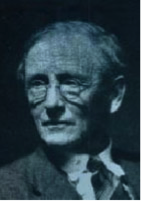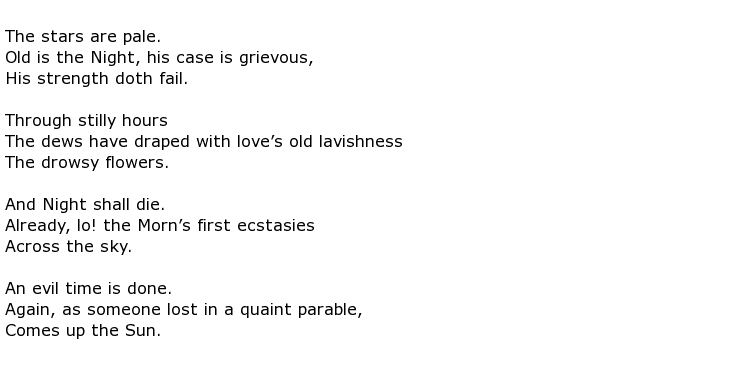 It would be fair to say that the Australian poet John Shaw Neilson succeeded as a popular poet despite his lack of sophistication and education. He was raised in a working class environment with very little schooling and spent a good part of his adult life doing manual labour on the construction of roads and dams. This he managed without being a particularly strong or robust man. But he stuck at his writing whenever he had the chance and had articles and volumes of poetry published. He wrote with great skill and tenderness about the natural world around him and he was also a lyricist and playwright.
It would be fair to say that the Australian poet John Shaw Neilson succeeded as a popular poet despite his lack of sophistication and education. He was raised in a working class environment with very little schooling and spent a good part of his adult life doing manual labour on the construction of roads and dams. This he managed without being a particularly strong or robust man. But he stuck at his writing whenever he had the chance and had articles and volumes of poetry published. He wrote with great skill and tenderness about the natural world around him and he was also a lyricist and playwright.
John Shaw Neilson was born in February 1872 in Penola, South Australia. His father and grandparents had emigrated from Scotland while his mother was Australian-born. The family scratched out a meagre living from the land, being plagued with rabbits and poor harvests, and were constantly striving just to keep going without ever making any real headway. John’s schooling was intermittent, caused either by family moves or just the fact that the places where they ended up didn’t have a school at all. He managed to get some education though and learned to read at home courtesy of a battered volume of Robert Burns poems and The Bible. He also managed to procure a volume of poems by Hood and the young Neilson soon developed his own talent for writing poetry.
As he grew up he found some of his work being published in a variety of publications but he still needed to earn a decent living. The only way to do that was to work where he could, often labouring on farms or infrastructure projects. In some ways he mirrored his father’s life; both worked as manual labours and both had poems published. He found though, by about the age of 50, that he could not manage manual work and he acquired a desk job with the Country Roads Board in Melbourne. He was, by then, a reasonably well known poet in Australia and it may have been that the State authorities were showing some gratitude for his literary contributions by enabling him to live a less physically demanding life.
Prior to this though he had poetry published in Sydney publications such as The Bulletin and The Clarion. Unfortunately his eyesight began to fail and this limited his reading and writing considerably. He found he had to dictate a lot of his work for others to write down. He contributed poems to The Bookfellow and the 1913 Fred John’s Annual but publication of the latter was delayed by the outbreak of the war. In fact this work was eventually published in 1919 under the title Heart of Spring. Four years later a second volume was produced and called Ballad and Lyrical Poems.
It was at this time when Neilson came into contact with leading literary figures in Melbourne and, soon after, he transferred his labouring effort from the pick and shovel to the office desk. He had many admirers who campaigned to get him a literary pension before his new office life began in 1928, in the very agreeable surroundings of Exhibition Gardens, Melbourne.
More success came his way with New Poems being published in 1927 followed by Collected Poems in 1934. A number of Neilson’s poems were set to music by famous composers such as Alfred Hill and Margaret Sutherland and a touring play about his life was broadcast by the Australian Broadcasting Commission.
Here is an example of Neilson’s simple but effective verse. It’s called The Break of Day and beautifully describes the dying of the night and the birth of a brand new day:

A hard life of manual labour eventually caught up with him though and, shortly after retiring from his administrative job in 1941, his health began an irreversible decline.
John Shaw Neilson died in a private Melbourne hospital on the 12th May 1942. He was 70 years old.

